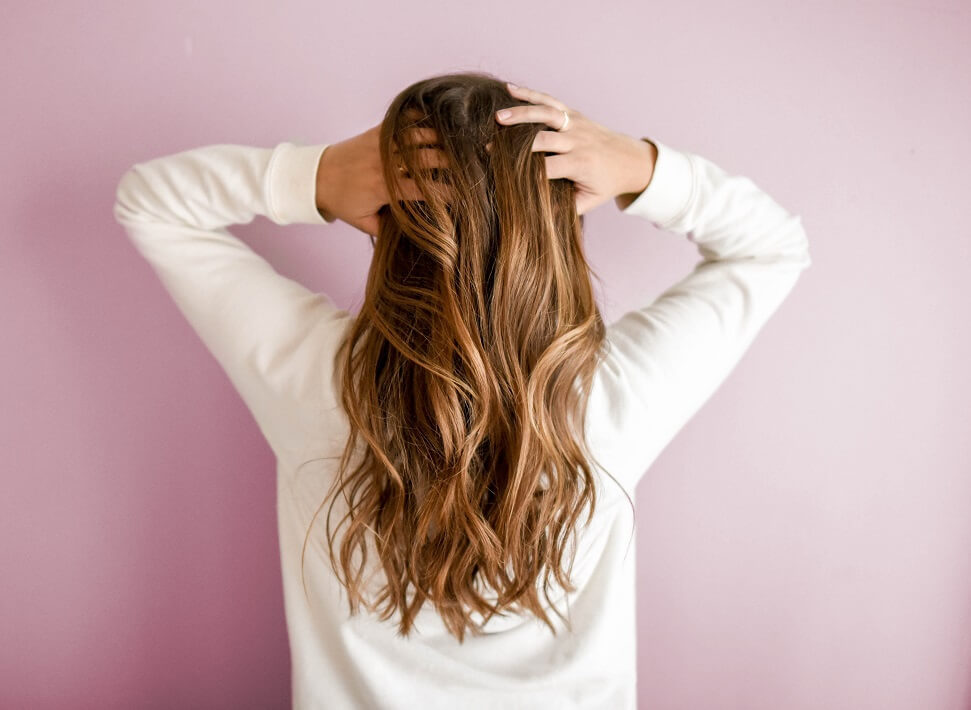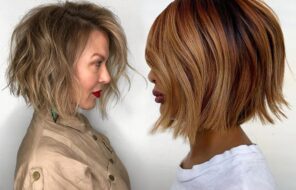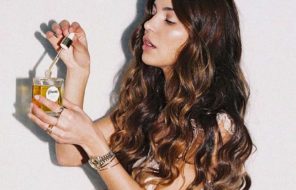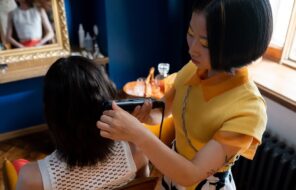Balayage is a hair coloring technique that produces a natural yet striking definition — and looks especially beautiful with curled hair. The low-maintenance style makes it an ideal alternative to traditional foil highlights. It’s perfect for those new to hair coloring or who prefer going to the salon as infrequently as possible.
Balayage as a highlighting technique
As fancy as the word may sound, balayage is just a technique for applying hair dye, like ombré or foil highlights. The term comes from the French word for “sweeping” and refers to the blended, natural highlights this technique produces.
The idea of a balayage is to use a small amount of hair dye to create a subtle yet striking brightening effect. The dye is primarily applied to the middle to ends of the hair, sometimes with a few strands running up the top of the head.
Only the outer layers are dyed
In contrast to full-foil highlights, which highlight most sections of the hair, balayage only colors the top layer. You might think this could lead to a stark, unnatural contrast (it certainly can if done incorrectly), but when done right, the balayage technique actually creates a more natural, sun-kissed look.
To better understand what balayage aims to do, think about the way the sunlight hits your hair. Typically, it wouldn’t touch the middle or bottom layers. Similarly, balayage only lightens the top layer while the underlayers remain your natural color.
Relatively easy maintenance
The toughest hair treatments to maintain are those that drastically alter the appearance of your natural hair. Going platinum blonde as a natural brunette will require touch-ups every few weeks, and even traditional highlights are susceptible to the dreaded root line.
Not so much with balayage. Balayage is the perfect choice if you’re looking for brightness and dimension without the commitment of shelling out several hundred dollars at the salon every few weeks.
Because the highlighted sections are so small and don’t extend to the root, it doesn’t look as stark when your hair begins to grow out. The roots are usually kept their natural color, so there’s no need to immediately touch up the hair as it grows.
Easy maintenance makes balayage an excellent treatment for someone who hasn’t dyed their hair previously or isn’t sure about full highlights. A grown-out balayage would look like another highlighting technique, ombré, where the hair is highlighted at the ends to produce a gradual dark-to-light effect.
All about the cost

You might think that less dye should mean a lower cost, but unfortunately, that’s not usually the case. Balayage is often slightly more expensive than partial highlights, perhaps because of the skill and time required to hand-paint the highlights instead of simply sectioning and foiling the hair.
That said, you may save money in the long run by choosing balayage because of the lack of maintenance required. You might touch it up every six months or so, whereas partial or full highlights require monthly or bi-monthly salon visits to fix that root outgrowth.
Balayage isn’t just for brunettes
Balayage is often done to lighten brunette hair, but that’s not the only option. In fact, blondes actually have more color options for balayage since lighter hair can take on a wider range of colors.
A blonde balayage might involve adding even lighter highlights to light hair to create a beautiful, brighter platinum effect. Another option is a reverse balayage, which uses the same application techniques, but darker color is added to the hair.
Blondes can add fun, unnatural colors to their hair through balayage. Pinks and purples can be a unique change to light-colored hair, and semi-permanent dyes make it possible to experiment without too much commitment.
There’s still a risk of damage
Though balayage targets a smaller portion of hair than many other types of highlights, it still involves dye. Breakage, discoloration, and allergic reactions are risks you run whenever you dye your hair.
Be sure to do your research when picking a salon and colorist. Choose a colorist with experience doing balayage, and don’t be afraid to get recommendations or look for proof on Instagram, as many colorists post their results on social media.
It’s also a good idea to ask for a consultation before your appointment. At a consultation, you can bring photos of balayage you want to replicate to ensure you and your colorist are on the same page.
Less is more
Gorgeous results come from a small amount of dye with balayage. Because of its easy upkeep, balayage is a great option for those who want to test out highlights without committing to a high-maintenance and overly expensive hair routine.





